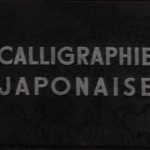Pierre Alechinsky
Pierre Alechinsky was born in Brussels in 1927. From 1944 to 1948, he studied typography, photography, and printing and illustration techniques at the Ecole nationale d’architechure et des arts décoratifs de la Cambre in Brussels. In 1945, he discovered the work of Michaux, of Dubuffet, and of the Surrealists, and becomes friends with the critic and art dealer Jacques Putman. His first personal exposition took place in 1947. Then in 1949 he met Dotremont and became a member of the Cobra movement in the same year, joining artists Asger Jorn and Karel Appel; he became one of the most productive members. The movement held an importance for him as much on a personal level as an ideological one: uninhibited spontaneity in art, the rejection of pure abstraction, and a refusal to specialize.
After the dissolution of the Cobra group, whose spirit he would continue to foster (“Cobra is my school”, he would say), Pierre Alechinsky moved to Paris. He finished his training as an engraver and introduced new techniques to Atelier 17, directed by Stanley William Hayter. It is during this same time beginning in 1952 that he became friends with Alberto Giacometti, Bram Van Velde, Wallace Ting, and that he began correspondence with the Japanese calligrapher Shiryu Morita de Kyoto. He progressively abandons oil painting for quicker and lore supple materials, such as ink, that allowed him freer reign over his fluid and sensitive style. Fascinated by oriental calligraphy, whose spontaneity attracted him, he undertook several trips to the Orient and in Kyoto made a documentary film on traditional Japanese art.
Beginning in the 1960s, Alechinsky began making frequent visits to New York, where he discovered a technique that suited him well – acrylic painting, introduced to him by Wallace Ting. The same year, he created his most famous work, “Central Park”, with which he inaugurates painting “with notes in the margins” inspired by comic books, where the central image is surrounded by a series of hand-drawn vignettes designed to complete the sense of the painting.
Passionate about books, he illustrated poems and texts for writers including Cioran, Butor, Yves Bonnefoy, André Frénaud, Tardieu, etc, and published several works. In 1983 Alechinsky became a professor of painting at the Ecole Nationale Supérieure des Beaux Arts in Paris. Since the 1980s, the artist has pursued his graphic research across a wide variety of media. It is in this same period that he gained access to the public order (Palais Bourbon, Hall du Ministère des Finances, etc). Expositions and retrospectives recognize him internationally, museums as well as galleries welcoming his work across the world entire. He lives and works in Bougival.
Calligraphie japonaise
 The education of the hand, everyday and classical calligraphy, then suddenly the post-War avant garde in Japan.
The education of the hand, everyday and classical calligraphy, then suddenly the post-War avant garde in Japan.
1956. 16 mm., black and white, 17′.
Production: Pierre Alechinsky
Music: André Souris
Voice: Roger Blin
Images : Francis Haar
Editing : Jean Cleinge
Sound: Paul Leponce



